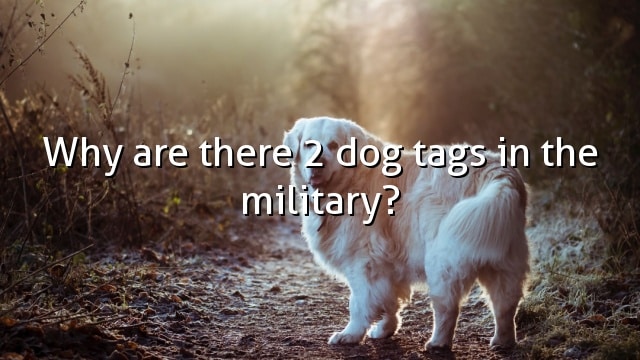There are two dog tags in the military because one is for the soldier’s name and the other is for their rank.
When did the army quit using notched dog tags?
Notched dog tags were phased out in the early 2000s.
What is engraved on military dog tags?
The most common inscription on military dog tags is the soldier’s full name and rank. Other common inscriptions include the soldier’s home state, unit, date of enlistment, and death date.
What does it mean when a soldier gives you his dog tags?
When a soldier gives you his dog tags, it signifies that he trusts you and is willing to let you take care of him in case he dies. It also shows that he is honorable and respects the military code of conduct.
What do black dog tags mean?
Black dog tags are typically worn by military personnel who have been killed in action.
Are military dog tags still used?
Black dog tags are typically worn by military personnel who have been killed in action.
Do they put dog tags in dead soldiers mouth?
There is no definitive answer to this question as it varies from country to country. Some countries bury their soldiers with a military ID card and dog tag attached, while others simply place a name tag on the soldier’s clothing.
Is it disrespectful to wear dog tags?
There is no right or wrong answer to this question, as it depends on your personal beliefs and etiquette. Some people may feel that wearing dog tags is disrespectful because it implies that the wearer is a soldier, while others may see it as a sign of respect and admiration. Ultimately, it is up to the individual wearing the tags to decide what they believe is appropriate.
Why do they put religion on dog tags?
There are many reasons why a person might choose to include religious information on their dog tags. Some may do so as a way of honoring their faith, or as a reminder of the importance of religion in their life. Others may choose to include religious information as a way of connecting with other members of their platoon or unit, or as a way of expressing solidarity with others who share the same faith.
What does T43 mean on dog tag?
There are many reasons why a person might choose to include religious information on their dog tags. Some may do so as a way of honoring their faith, or as a reminder of the importance of religion in their life. Others may choose to include religious information as a way of connecting with other members of their platoon or unit, or as a way of expressing solidarity with others who share the same faith.
What should I put on my military dog tag?
There are many reasons why a person might choose to include religious information on their dog tags. Some may do so as a way of honoring their faith, or as a reminder of the importance of religion in their life. Others may choose to include religious information as a way of connecting with other members of their platoon or unit, or as a way of expressing solidarity with others who share the same faith.
What does T42 mean on dog tags?
There are many reasons why a person might choose to include religious information on their dog tags. Some may do so as a way of honoring their faith, or as a reminder of the importance of religion in their life. Others may choose to include religious information as a way of connecting with other members of their platoon or unit, or as a way of expressing solidarity with others who share the same faith.
How do you silence military dog tags?
There are many reasons why a person might choose to include religious information on their dog tags. Some may do so as a way of honoring their faith, or as a reminder of the importance of religion in their life. Others may choose to include religious information as a way of connecting with other members of their platoon or unit, or as a way of expressing solidarity with others who share the same faith.
Can I wear my boyfriends dog tags?
There are many reasons why a person might choose to include religious information on their dog tags. Some may do so as a way of honoring their faith, or as a reminder of the importance of religion in their life. Others may choose to include religious information as a way of connecting with other members of their platoon or unit, or as a way of expressing solidarity with others who share the same faith.
Do all Marines get dog tags?
There are many reasons why a person might choose to include religious information on their dog tags. Some may do so as a way of honoring their faith, or as a reminder of the importance of religion in their life. Others may choose to include religious information as a way of connecting with other members of their platoon or unit, or as a way of expressing solidarity with others who share the same faith.
